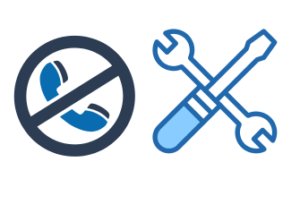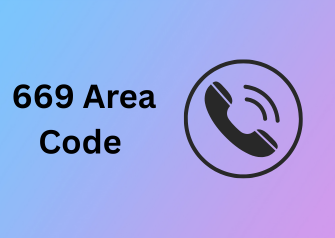Let’s take a journey back to understand where area code 669 originated and what gives it its unique identity. If you’re receiving calls from this area code, don’t panic just yet! It’s important to note that area code 669 is not inherently suspicious. It’s simply one of the overlay area codes used in Santa Clara County, California, and surrounding areas. This means it shares geographic space with the older and more familiar area code, 408.
Area code 669 was introduced in November 2012 to meet the growing demands for new phone numbers in the region. The explosion of smartphones, landlines, and business connections fueled the need for an additional code. Essentially, it was just a practical solution to match the tech boom happening in Silicon Valley and its neighboring locales. No sinister motives here, just a natural expansion.
So, if you’re thinking, Hey, I have friends or relatives in San Jose or Sunnyvale! then it’s entirely possible that someone you know may be contacting you. However, as you may have noticed, spammers have also latched onto 669 for their not-so-friendly purposes. Why? Because scam callers love disguising themselves as local contacts to increase their chance of getting someone to pick up the phone.
Who Should Expect Calls From Area Code 669?
- Residents of Santa Clara County: If you live in or around the San Jose area, you may frequently receive calls from numbers with this area code for genuine reasons, like friends, businesses, or local service providers.
- Frequent callers to tech hubs: Those who interact often with tech companies or service providers based in Silicon Valley could notice calls originating from 669 as part of regular communication.
- Scammers trying to target you: Unfortunately, spam calls are prevalent everywhere, and 669 is no exception. These calls might come masked as job offers, unpaid bills, or even fake giveaways.
Ultimately, understanding the origins of area code 669 helps you build better awareness. The more informed you are about its history and geographical link, the more prepared you can be to differentiate between genuine and potentially fraudulent calls.
Stay tuned as we explore tools and strategies to filter spam, separate scams from real communications, and protect yourself in the following sections. With just a little knowledge, dealing with unwanted calls can go from overwhelming to manageable in no time!
Why Spammers Use 669
You might be wondering: why would scammers or telemarketers choose area code 669? The answer is simple: local area codes create trust. People are more likely to answer calls when they think they’re from someone nearby. In the case of 669, its association with Silicon Valley adds a layer of credibility, as the region is known for thriving businesses, tech headquarters, and a highly connected community. Spammers exploit this by aiming to appear legitimate, which unfortunately works on many unsuspecting recipients.
Common Patterns in Spam Calls Linked to 669

Have you ever been jolted out of a peaceful moment by yet another unfamiliar 669 number? If your answer is yes, you’re not alone. While area code 669 covers parts of the Silicon Valley region in California, its reputation as a hub for spam calls has grown steadily in recent years. But recognizing the patterns in these annoying calls can save you time, frustration, and even money. Let’s dive into the most common tricks these pesky scammers use, and how you can spot them before they waste your energy.
1.The Too-Good-To-Be-True Offers
One of the most frequent themes of spam calls linked to 669 revolves around offers that seem suspiciously fantastic. Think dream-worthy prizes: luxury vacations, huge cash giveaways, or even approval for loans or credit cards you never applied for. Scammers deliberately use tempting bait to prey on your curiosity. The golden rule here? If it wasn’t part of a contest or offer you knowingly engaged with, it’s most likely a scam.
- Vacation deals, often asking for payment to unlock the trip.
- You’ve won a prize! calls demanding sensitive information.
- Congratulations! You qualify for debt relief! messages out of nowhere.
2.The Urgent Problem That Only They Can Fix
A common hallmark of scammers is to create panic. They might pose as government officials, utility companies, or even law enforcement agents, telling you that there’s an overdue balance, legal issue, or other problem that requires immediate attention. Their goal? To pressure you into acting without thinking.
Some red flags include:
- This is the IRS. You owe money, and the police will be at your door unless you pay now!
- Fake utility companies threatening to cut off your electricity or water.
- Your Social Security number has been compromised!
Here’s the catch: legitimate agencies won’t call and issue threats like this. Stay calm and verify who’s calling instead of letting fear take over.
3.The Silent or Robotic Calls
You answer a call from 669, expecting a person on the line, but… nothing. Other times, you might hear an oddly robotic voice delivering a pre-recorded message. Both scenarios are common spam tactics. Silent calls are often used to confirm if your number is live, while robocalls aim to distribute scams quickly and widely.
Signs it’s spam include:
- Long pauses or silence after you say hello.
- Messages from robots urging you to press 1 for more details.
- The number calls you repeatedly over a short time.
4.Unfamiliar Local Numbers Mimicking Real Ones
Thanks to spoofing technology, scammers often make their 669 number appear similar to actual numbers you might trust, like those of local businesses or even your neighbors. This is especially tricky because you’re more likely to pick up a call if the number seems familiar.
Stay cautious if:
- The caller ID looks familiar, but the voice on the other end doesn’t.
- The caller immediately pressures you to provide personal details, like your bank account or Social Security number.
- Calls come at unusual times, like early morning or late at night.
How to Stay Steps Ahead of 669 Scammers
Learning these patterns is your first line of defense against spam calls. Before panicking at an urgent threat or rejoicing over a too-good-to-be-true offer, remember this: scammers rely on emotional manipulation. Keep your guard up, protect your personal information, and always verify suspicious calls through official channels. Knowledge really is power when it comes to dealing with persistent 669 spam calls!
Unsolicited Calls Versus Legitimate Communications
Let’s face it, we’ve all been there. You’re going about your day when your phone lights up with a call from an unknown number, often with a local-looking area code like 669. You hesitate for a moment, wondering, “Is this important? Could it be a job follow-up or maybe a local business I reached out to?” Unfortunately, most of the time, it’s just another spam call trying to waste your time or, worse, scam you out of your hard-earned money. But how can you confidently distinguish between unsolicited spam calls and legitimate communications without missing something important? Let’s dive in!
What Makes a Call Legitimate?
Legitimate communications are typically structured and easy to identify if you know what to look for. Here are a few guiding points to help differentiate them:
- Caller Identification: A legitimate caller, such as a company or government agency, often displays a verified caller ID. You’ll also find that most institutions prefer to reach out via email or official correspondence, rather than cold-calling.
- Clear Purpose: If a call is genuine, the caller will generally state their reason for contacting you promptly and in a professional manner. For example, if it’s your bank calling, they’ll start by identifying themselves and the reason for their call.
- Prior Contact: In almost all cases, legitimate businesses or organizations only call you if you’ve had prior interaction with them, for instance, an inquiry or subscription.
Why Are Unsolicited Calls So Problematic?
Unsolicited calls, especially with area code 669, are often orchestrated by spammers with less-than-honest intentions. They can be disruptive, time-consuming, and, in some cases, outright dangerous. Here’s what sets them apart:
- Pressure Tactics: Spam callers often pressure you to act quickly, whether it’s to claim a prize, settle a debt, or prevent account suspension. Their goal? Push you into making snap decisions without giving you time to verify the call’s legitimacy.
- Lack of Verification: A major red flag of spam callers is the inability, or refusal, to provide verifiable details. For instance, they might avoid answering specific questions about their organization, dodge requests for a callback number, or fail to provide official emails.
- Generic Opening Lines: How often do these calls begin with phrases like, “Hello, is the head of the household available?” or “We have an exciting opportunity for you!” Legit calls rarely start this way. Instead, they tend to be direct and relevant to your specific circumstances.
Tips for Playing It Safe
If you’re ever unsure whether an incoming call is legitimate or unsolicited spam, here are some quick, actionable tips:
- Don’t answer unfamiliar numbers: Let unknown numbers go to voicemail. If it’s important, they’ll leave a message with details on how to get back to them.
- Look up the number: A quick online search or checking the number on trusted phone number lookup services helps reveal if others have flagged it as spam.
- Verify with a trusted source: If someone claims to be calling from your bank, the IRS, or another organization, hang up and call them back using their official customer service line.
- Trust your instincts: If it feels fishy, it probably is. Don’t share personal details unless you’re 100% sure of the caller’s identity.
The Rise of Regional Scammers and Tactics Exploited

Have you ever glanced down at your phone, noticed a call from your area code, and thought, Oh, this must be important! only to answer and realize… it’s a scam? You’re not alone. This clever tactic is a favorite among scammers, particularly those disguising themselves with codes like 669. But where did this surge come from? And how are they getting better at tricking us? Let’s dive into it and empower you with knowledge to stay ahead!
The Local Angle: Why Scammers Use Your Area Code
One of the sneakiest tricks in the scammer’s playbook is neighborhood spoofing. This happens when fraudsters manipulate the caller ID to make their number appear local, like it’s coming from your own 669 area code. Why? Because we’re more likely to trust and answer calls that seem familiar or related to our geographic region. Naturally, a call that appears to be from your own community carries more weight than one from, say, the other side of the globe.
The truth is, these scammers often aren’t anywhere near 669 or wherever you’re located. They’re frequently operating from far-off countries or even automated systems designed to churn out mass robocalls. Their primary goal? Get you to pick up so they can launch into their scripted pitch or exploit your curiosity with fake offers, fake emergencies, or elaborate schemes.
Crafty Ploys to Watch Out For
Spam calls tied to 669 (and many other area codes) often share some eerily similar approaches. Below are a few common tactics scammers exploit to trick victims:
- Phony Urgency: Your utilities will be disconnected today unless you pay immediately Scammers thrive on creating panic. If you’re feeling rushed, pause—it’s probably a red flag.
- Government Impersonation: Calls claiming to be from the IRS, Social Security, or other official agencies asking for sensitive information or money are a favorite con. Legit organizations almost never operate this way over the phone.
- Prize Scams: Congratulations! You’ve won an all-expenses-paid vacation, but we need your credit card details to confirm.” If it sounds too good to be true, it is.
- Tech Support Cons: “This is Microsoft. We’ve detected malware on your computer.” These calls aim to scare you into giving remote access or payment for fake services.
- Charity Requests: Sadly, scammers sometimes pose as nonprofit organizations, especially after disasters, exploiting your goodwill to pocket your cash.
Tech-Savvy Tools Used by Fraudsters
Modern scammers have advanced tools to keep their operations running smoothly. Call spoofing technology lets them mask their number, making it appear as if they’re calling from a legitimate business or a nearby contact. Automated systems, or robocalls, clog up phone lines with bulk calls at massive scales, playing pre-recorded messages tailored to fool unsuspecting victims.
The digital age has allowed these criminals to upgrade their arsenal even further. They may combine data breaches (that expose your name or number) with artificial intelligence to make their scams seem scarily personalized. For example, they might know your name or recent activities, tricking you into thinking the call is authentic.
Why Scammers Target Regional Communities
Scams targeting specific areas, like those using the 669 area code, are often more effective because they capitalize on familiarity. Locals feel a sense of connection or urgency when they receive a call that appears from within their community. Additionally, criminals might study regional trends to make their scripts more relatable or believable. For example, they may reference local companies, utilities, or events to seem legitimate.
Spotting the Red Flags
The best way to outsmart these scammers is to stay vigilant. Train yourself to recognize red flags during calls, like unsolicited requests for personal information, aggressive demands for immediate payment, or claims that you’ve won something you didn’t sign up for. The key is to remain calm and skeptical when in doubt—scammers thrive on emotion and impulse.
In the ever-evolving battle against phone scams, awareness is one of your greatest weapons. By understanding the clever tactics fraudsters use, like neighborhood spoofing and emotional manipulation, you can stay one step ahead. Don’t let these regional scammers fool you—pick up only when you’re sure it’s safe, and hang up on anything that doesn’t feel right!
Effective Call Blocking Techniques and Tools

We’ve all been there , your phone rings, and it’s a number you don’t recognize. You pick up, only to hear a pre-recorded message about some too-good-to-be-true offer or a robot asking for personal details. If this has been happening to you with area code 669, don’t worry! There are practical ways to take control and block these intrusive calls. Let’s talk about some foolproof methods and tools to stop spam calls in their tracks.
Understand the Basics of Call Blocking
The first thing to know is that you don’t have to put up with spam calls. Your smartphone has handy built-in tools to help you block unwanted callers. Modern devices often allow you to block individual numbers with just a few taps. Look through your call history, select the troublesome number, and find the option to block it. Easy, right?
For those recurring or suspicious calls from unknown numbers, consider enabling your phone’s Do Not Disturb function. On many devices, you can customize this feature to allow calls only from your saved contacts. This ensures that no sneaky spammers get through while still allowing your loved ones and colleagues to reach you.
Use Call-Blocking Apps for Extra Protection
If you’re dealing with persistent spammers or a large volume of spam calls from area code 669, it might be time to call in reinforcements. Several third-party apps specialize in identifying, filtering, and blocking spam calls. Here are some top options worth considering:
- Hiya: This app identifies unknown callers and provides spam warnings in real time. It’s brilliant for spotting potential fraudsters before you even pick up.
- RoboKiller: Not only does it block spam calls, but it also has a fun feature that will play prerecorded messages to irritate the spammer!
- Truecaller: One of the most popular apps worldwide, Truecaller has a robust database of known spam numbers and can block them effectively.
- Nomorobo: This app does an excellent job of filtering robocalls while letting legitimate ones go through. It’s great for both personal and business users.
Many of these apps offer free versions with essential features or premium subscriptions for advanced tools. Take some time to explore which one fits your needs best.
Take Advantage of Your Carrier’s Tools
One frequently overlooked solution comes from your phone carrier. Most providers now offer built-in call blocking and spam detection as part of their service plans. For example:
- AT&T has Call Protect, which is free and automatically blocks fraud calls while giving you the option to block suspected spam numbers.
- Verizon offers Call Filter, which labels suspected spam calls and gives you the ability to block them permanently.
- T-Mobile features Scam Shield, alerting you to scam risks and allowing you to block entire types of calls.
Contact your carrier to check if they have these options and how to activate them.
Be Proactive: Block and Report
Beyond using tools, don’t forget to report spam and scam calls. Many call-blocking apps and carriers make it simple to report suspicious numbers with a tap, helping to update spam databases and protect others from similar calls.
Also, be wary of answering calls from unknown numbers altogether. When in doubt, let it go to voicemail. Legitimate callers will leave a message; spammers won’t bother.
Legal Steps and Reporting Spam Calls from 669
We’ve all been there. You’re in the middle of cooking dinner, enjoying a show, or even working, and your phone rings. The number looks local – 669 – so you answer, only to hear a robotic voice or an overly aggressive pitch for a product you’ve never heard of. Frustrating, right? Well, here’s the good news: you don’t have to put up with these annoying calls. There are legal steps you can take, and reporting spam calls is simpler than you might think!
Why Reporting Matters
Before we dive in, let’s talk about why reporting these spam calls is so important. Many of these callers aren’t just annoying — they’re actively trying to scam people out of their money or personal data. By reporting them, you’re helping regulatory agencies like the Federal Communications Commission (FCC) or the Federal Trade Commission (FTC) take action against these scammers. It also helps build a clearer picture of the problem, allowing tech developers and phone companies to enhance their anti-spam measures. Each report matters; you’re making a difference!
How to Report Spam Calls
Alright, so how do you actually report these pesky spam calls? It’s easier than you think. Just follow these steps:
- Document the Call: Take note of details like the phone number, the time of the call, and anything suspicious about the content (e.g., were they asking for personal information or payments?). These details will help make your report more valuable.
- Report to the FTC: Head over to the FTC’s official complaint form. Select the option for unwanted calls and fill out the request form with the information you recorded.
- Use the FCC’s Complaint System: Visit the FCC complaint portal. They handle complaints about fraudulent calls and aim to resolve issues wherever possible.
- Check with Your Carrier: Many mobile carriers, like Verizon, AT&T, or T-Mobile, allow you to report spam calls directly through their apps or websites. They use this data to block repeat offenders for other users.
Don’t Forget About the Do Not Call List
Before reporting spam calls, make sure your number is on the National Do Not Call Registry. If you’re already registered and still receiving spam, that’s a solid red flag the caller is not following the law. That adds significant weight to your complaint!
Legal Consequences for Spam Callers
Did you know that many spam calls are illegal? When scammers violate telemarketing laws, such as calling numbers on the Do Not Call list or using deceptive tactics, they could face serious penalties. Thanks to various consumer protection laws like the TRACED Act, authorities now have increased power to crack down on robocallers and scammers. The more these activities get reported, the higher the chance of regulatory enforcement.
Some Quick Pro-Tips
- Don’t Engage: Resist the urge to argue or question the spam caller. Simply hang up.
- Avoid Sharing Information: If someone you don’t know asks for your billing info, Social Security number, or other sensitive details, don’t provide it, even if they sound legit.
- Keep Your Guard Up: Keep your eyes open for red flags like aggressive language, threats, or limited-time offers.
How to Safeguard Your Personal Data from Phone Scams
We live in a time when your phone could ring for any reason, a friend checking in, a family member calling, or, unfortunately, a scammer trying to trick their way into accessing your personal information. If you’ve ever picked up a call only to be greeted by a robotic voice asking for your Social Security number or promising you a dubious lottery win, you’re not alone, especially if the spam came from area code 669.
So, how do you keep your personal data safe in an era of increasingly cunning phone scams? Let’s dive in.
Be Mindful of the Caller’s Identification
The first layer of protection is simple: verify who’s calling. Scammers will often manipulate their caller ID (a technique called spoofing) to appear as legitimate businesses, government agencies, or even people you might know.
When you get a call from area code 669, or any unknown number, for that matter, avoid answering unless it’s from a trusted source. If you accidentally pick up, steer clear of providing personal details like your address, banking information, or Social Security number unless you are 100% certain you’ve verified the caller’s legitimacy. A good rule of thumb? Say no to giving out sensitive information over the phone unless you initiated the call.
Protect Yourself with Call Screening Tools
Many smartphones these days come equipped with features that help you screen unknown calls. Take advantage of tools like:
- Caller ID and spam warnings: Look out for labels like Spam Risk or Scam Likely that your service provider might display.
- Custom blocks: Trustworthy apps such as Hiya or Truecaller allow you to block suspicious numbers proactively.
- Voice mail-first policy: Let unknown numbers go to voicemail. Legitimate callers will leave a message, but scammers usually won’t.
Don’t Fall for Pressure Tactics
Scammers thrive on urgency. They’ll often make statements such as, Your account will be suspended, You owe unpaid taxes, or You must act now to claim your prize. Always remember: if it seems too good—or too bad—to be true, it probably is.
Stay calm, and don’t let panic take over. A genuine organization won’t threaten or rush you into making decisions without giving you the chance to verify their legitimacy. Hang up if you feel pressured, and independently contact the business or government agency they claim to represent.
Secure Your Information Offline to Stay Safe Online
An often-overlooked way to safeguard your data is by taking a proactive approach to keeping your information private in the first place. Many phone scams originate from leaked data—your name, phone number, or email address being sold on the dark web.
Here’s a checklist you can follow to minimize your digital footprint:
- Be cautious when sharing your phone number: Whether you’re signing up for free trials, receiving promotions, or filling out online forms, consider using a secondary or disposable number instead.
- Monitor privacy settings on social media: Limit who can view your personal information and contact details.
- Sign up for a reputable identity protection service: These services monitor for breaches involving your data and alert you to potential misuse.
When in Doubt, Report It
If you’ve received a suspicious call from area code 669, reporting it to authorities can help curb scams in the broader community. Forward spam texts to 7726 (SPAM), or log a complaint with the FCC or FTC.
By staying vigilant and arming yourself with these tips, you can successfully dodge scammers and safeguard your personal data. Remember, in the phone scam world, knowledge is your ultimate shield!











